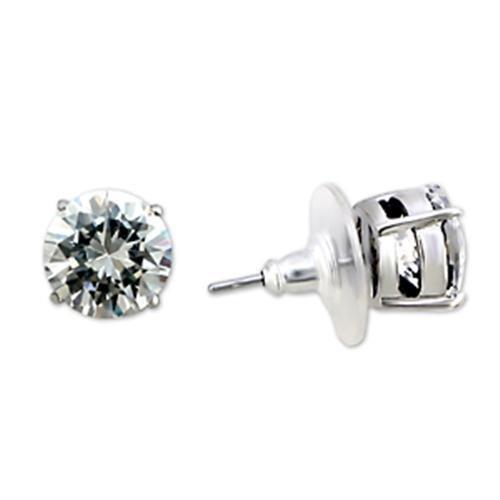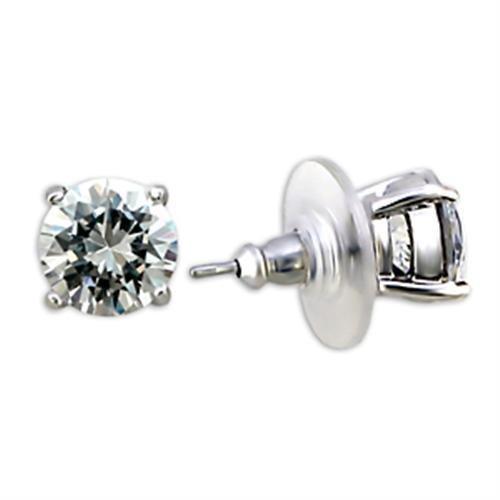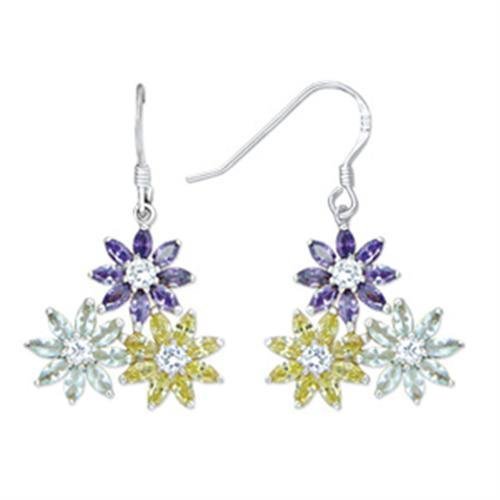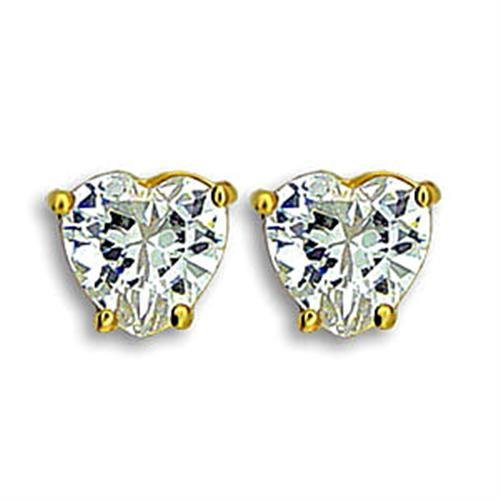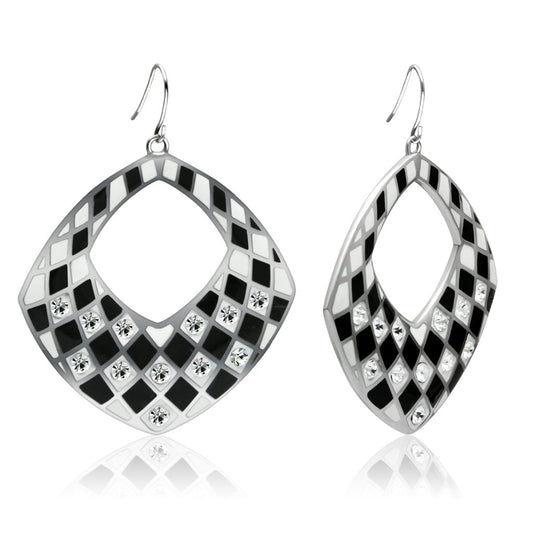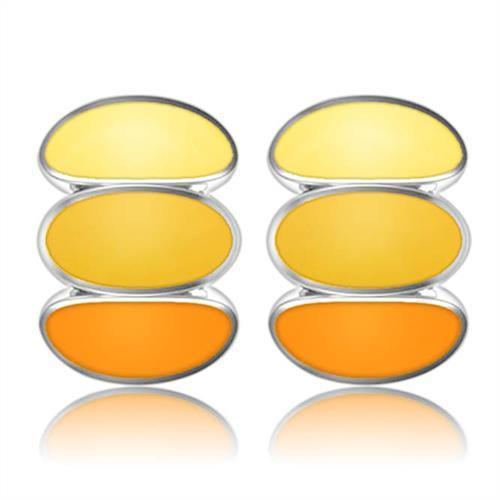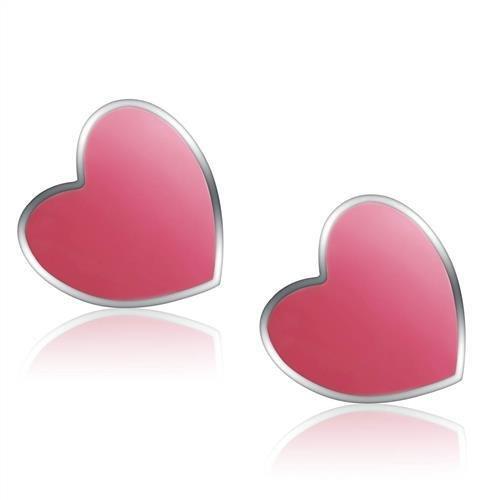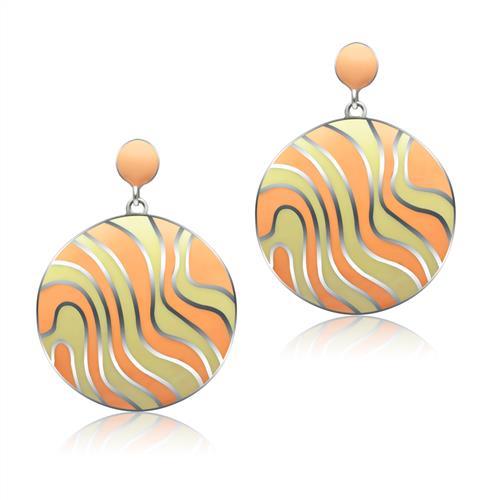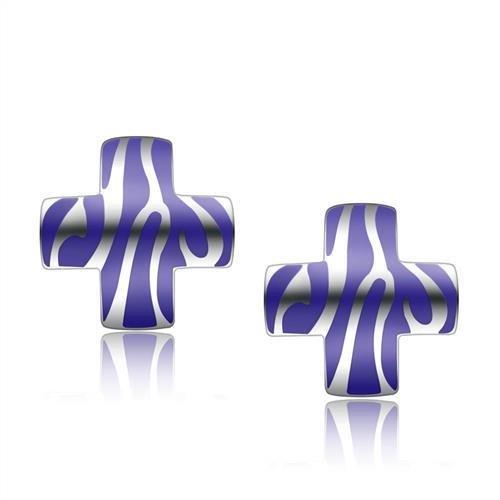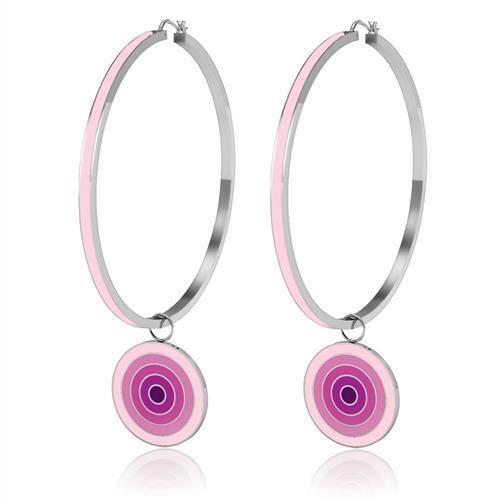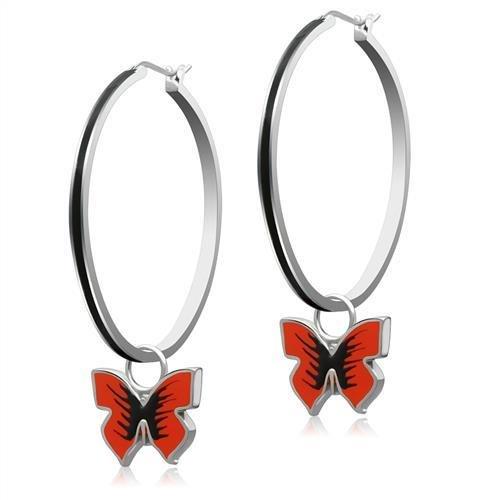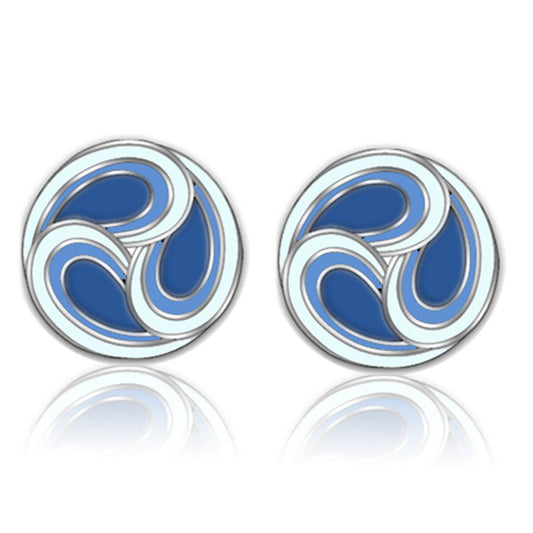Diamonds are revered for their unrivaled hardness, making them one of the most popular choices for long-lasting jewelry. But is there anything that can truly scratch a diamond? In this article, we’ll explore what other materials, besides emeralds and rubies, can scratch diamonds, and uncover a surprising world of industrial compounds and natural gems that come close. We’ll also dive into the Mohs scale of hardness, explaining how gemstones and everyday materials compare to diamonds.
Whether you're looking to protect your precious pieces or want to understand more about the science behind gemstone durability, this guide will leave you feeling like a gemstone expert.
Understanding Diamond Hardness on the Mohs Scale
Diamonds rank at 10 on the Mohs scale of hardness, making them the hardest natural material known to man. But what does this actually mean?
The Mohs scale measures a material's ability to resist scratches. A material with a higher rating can scratch anything with a lower rating. Because diamonds are at the very top of the scale, they can scratch all other materials, but only another diamond can scratch a diamond. This is why diamond jewelry is highly valued for rings and pendants, where everyday wear can take a toll on softer gemstones.
However, hardness isn’t the only factor to consider when discussing what can damage diamonds. Tenacity—a gemstone’s ability to withstand impact—is a different characteristic altogether. Diamonds may be hard, but they are also brittle, meaning they can chip or shatter with a hard blow despite their impressive scratch resistance.
Related collection: Explore Our Stunning Ring Collection
Materials That Can Scratch Diamonds: Beyond Rubies and Emeralds
While rubies and emeralds rank high on the Mohs scale, they fall short of being able to scratch a diamond. Let's look at some natural and synthetic materials that are capable of this feat.
1. Synthetic Diamonds
One of the few materials capable of scratching a diamond is another diamond. Synthetic diamonds are lab-grown and have the same hardness as natural diamonds. These are often used in industrial applications, such as cutting tools, where extreme hardness is required.
2. Moissanite (Hardness 9.25)
Often mistaken for a diamond due to its brilliance, moissanite is one of the hardest naturally occurring materials. It ranks 9.25 on the Mohs scale, making it harder than both rubies and sapphires. While moissanite can scratch almost any material, it falls just short of being able to scratch a diamond.
If you're looking for a durable alternative to diamonds in your jewelry, moissanite is a popular option for earrings and necklaces.
Related collection: Discover Elegant Earrings
3. Boron Nitride
Boron nitride is a fascinating material used in high-tech industries for its exceptional hardness. In certain forms, it approaches diamond-like hardness, making it capable of scratching diamonds. Though not commonly found in jewelry, boron nitride is widely used in industrial abrasives.
Surprising Everyday Materials That Can Cause Damage
While diamonds are tough, everyday materials can still cause minor wear over time. One such culprit is quartz, which is often present in dust particles. Quartz ranks 7 to 7.5 on the Mohs scale, which isn’t enough to scratch a diamond, but it can damage softer gemstones and metals used in jewelry settings.
Quartz in Dust and Sand
Did you know that the dust you see floating in the air contains tiny particles of quartz? Over time, these particles can wear down the finish of your jewelry. This is especially true for bracelets and chains, which come into frequent contact with surfaces.
Related collection: Explore Our Bracelet Collection
Industrial Compounds: Carborundum (Silicon Carbide)
One synthetic material that deserves special mention is carborundum, also known as silicon carbide. This compound is incredibly hard and widely used in abrasive tools. With a hardness just below diamond, silicon carbide can scratch nearly any material, making it essential for cutting and grinding applications.
While not a material you'd find in everyday jewelry, it’s a reminder of how synthetic compounds have advanced to rival the natural toughness of diamonds.
Gemstones That Come Close to Scratching Diamonds
While diamonds reign supreme on the Mohs scale, there are a few gemstones that come surprisingly close. These stones are often used in jewelry for their durability and stunning appearance.
4. Corundum (Hardness 9)
Corundum includes rubies and sapphires, both ranking 9 on the Mohs scale. While these stones are incredibly durable, they are still unable to scratch diamonds. Corundum is widely used in high-end jewelry, especially in pieces like pendants and rings, because of its brilliance and hardness.
While corundum can’t damage a diamond, it remains a valuable choice for jewelry pieces meant to endure daily wear.
Related collection: Shop Beautiful Pendants
5. Topaz (Hardness 8)
Topaz is another popular gemstone, known for its stunning colors and durability. It ranks 8 on the Mohs scale, which means it can scratch quartz and feldspar but falls short of scratching diamonds or corundum.
Topaz’s hardness makes it a great option for jewelry that’s worn regularly, such as chains and bracelets. However, since it is slightly more brittle than other stones like spinel or sapphire, it requires careful handling to avoid chipping.
Related collection: Discover Our Chain Collection
6. Spinel (Hardness 7.5-8)
Often mistaken for rubies or sapphires, spinel is a durable and stunning gemstone that offers a wide range of colors. With a hardness of 7.5 to 8, spinel is resistant to scratches and can endure daily wear, but it won’t scratch a diamond.
Spinel’s durability makes it a fantastic choice for necklaces, where stones are more likely to come into contact with clothing or skin.
Fun Fact: Historically, spinels were often misidentified as rubies. One of the most famous "rubies" in the British Crown Jewels is actually a spinel.
Related collection: Browse Our Stunning Necklace Collection
Industrial Materials That Can Scratch Diamonds
While natural gemstones have their limits, several industrial materials have been developed to rival the hardness of diamonds. These materials are commonly used in tools and machinery for cutting, grinding, and polishing.
7. Titanium Carbide
Titanium carbide is an industrial compound that combines titanium and carbon, creating a material with extreme hardness and abrasion resistance. It’s often used in cutting tools and armor plating, as it can scratch most materials, including diamonds under certain conditions.
Though titanium carbide isn’t used in jewelry, its remarkable hardness demonstrates the advancements in material science that have brought us closer to creating diamond-like durability in synthetic materials.
8. Carborundum (Silicon Carbide)
Carborundum, or silicon carbide, is another synthetic material that rivals diamond in hardness. With a hardness just below 10 on the Mohs scale, it is used in industrial settings for cutting and grinding tools. Its ability to scratch diamonds makes it invaluable for industries that require precision cutting.
Did You Know? Silicon carbide is sometimes used in the production of high-end abrasives, including those used for shaping diamonds themselves.
9. Boron Nitride
Boron nitride is a synthetic material with unique properties that make it capable of scratching diamonds in its harder forms. It’s often used in high-temperature environments and as a lubricant in extreme conditions.
While not a material you'll encounter in everyday life, boron nitride showcases the power of synthetic compounds in industrial applications.
Protecting Your Diamond Jewelry from Scratches
Even though diamonds are the hardest natural material, they are not indestructible. Here are some practical tips to keep your diamond jewelry looking flawless for years to come.
1. Store Your Jewelry Properly
Always store your diamond pieces separately to avoid scratches from other diamonds or gemstones. Use a soft-lined jewelry box or individual pouches to keep them safe.
2. Avoid Wearing Diamonds During High-Impact Activities
Although diamonds are resistant to scratches, they can still chip or shatter if hit with a strong force. Remove your diamond jewelry before engaging in activities like sports, gardening, or housework.
3. Clean Your Diamonds Regularly
Dust and particles containing quartz can settle on your diamonds over time, dulling their brilliance. Regular cleaning with a soft cloth and mild detergent will help keep your jewelry sparkling.
Related collection: Explore Our Ring Collection for Durable Everyday Wear
Lesser-Known Gemstones: What You Should Know
While popular gemstones like rubies and sapphires are well-known for their durability, there are a few lesser-known stones that also deserve attention for their impressive wearability.
10. Kyanite (Hardness Varies from 4 to 7.5)
Kyanite is an unusual gemstone because its hardness varies widely depending on the direction in which it’s measured. Along one axis, it can be quite hard—up to 7.5 on the Mohs scale—but along another axis, it can be as soft as 4.
Because of this variability, kyanite is rarely used in jewelry, but when properly cut, it can be a stunning addition to a jewelry piece. However, it’s far too soft to scratch a diamond.
11. Jade (Nephrite and Jadeite)
Jade is an ancient gemstone prized for its beauty and toughness. Unlike diamonds, jade is known for its tenacity rather than hardness. Tenacity refers to a stone’s ability to withstand impact without breaking or chipping.
- Nephrite jade has a fibrous structure, making it highly resistant to breaking.
- Jadeite jade is slightly harder but still falls far short of being able to scratch a diamond.
Fun Fact: In some cultures, jade is considered more valuable than diamonds due to its symbolic importance and toughness.
If you're looking for everyday jewelry that can withstand a bit of rough handling, jade pieces—especially in bracelets—are a smart choice.
Related collection: Shop Durable Bracelets
Understanding Tenacity vs. Hardness in Gemstones
Many people assume that a gemstone’s hardness is the only factor that determines its durability. However, tenacity is equally important when it comes to everyday jewelry wear. Let's break down the difference between these two terms:
| Property | Definition | Example Gemstone |
|---|---|---|
| Hardness | Ability to resist scratches | Diamond (Hardness 10) |
| Tenacity | Ability to withstand impact without breaking | Jade (Very Tough) |
A diamond, while extremely hard, is brittle. In contrast, a jade bracelet is much more likely to survive a fall without damage. This distinction is crucial when choosing jewelry for different purposes.
Related collection: Browse Our Stunning Jade-Inspired Necklace Collection
Synthetic Materials Capable of Scratching Diamonds
The jewelry world isn’t just about natural gemstones. Synthetic materials have been developed that are capable of matching or exceeding the hardness of diamonds. Here’s a quick look at some notable synthetic materials.
12. Silicon Carbide (Carborundum)
We mentioned silicon carbide earlier, but it’s worth highlighting again. This industrial material has a hardness just below diamond on the Mohs scale. It’s used in cutting tools, polishing compounds, and even armor plating.
In jewelry, silicon carbide is sometimes used to polish and shape diamonds themselves.
13. Boron Nitride
Another synthetic compound that rivals diamond is boron nitride. This material has diamond-like properties and is used in industrial applications that require extreme heat and pressure resistance.
While you won’t find boron nitride in jewelry, its existence proves that science is getting closer to replicating diamond hardness in a lab.
How to Protect Your Diamond Jewelry from Scratches and Chips
Even though diamonds are the hardest natural material, they are not indestructible. Here are some practical tips to help you protect your diamond jewelry from scratches, chips, and general wear and tear.
1. Avoid Storing Diamonds Together
Diamonds can scratch each other. Store each piece separately in a soft-lined jewelry box or individual pouches to prevent damage.
2. Remove Jewelry During High-Impact Activities
While diamonds won’t scratch easily, they are vulnerable to chipping if hit at the right angle. Remove your rings and bracelets before doing activities like sports, gardening, or housework.
Related collection: Explore Durable Rings for Everyday Wear
3. Clean Your Jewelry Regularly
Dust and particles containing quartz (hardness 7 on the Mohs scale) can accumulate on your jewelry. Over time, they can cause micro-scratches that dull the surface of softer metals.
Clean your jewelry with a soft cloth and mild detergent to remove abrasive particles and maintain your jewelry’s brilliance.
Final Thoughts: Choosing the Right Gemstone for Durability
When choosing jewelry that will stand the test of time, it's important to consider both hardness and tenacity. While diamonds are the hardest natural material, other gemstones like moissanite, corundum, and jade offer unique advantages in terms of wearability.
If you're looking for jewelry pieces that can endure daily wear, explore our collections of rings, necklaces, and bracelets crafted with durable gemstones and quality craftsmanship.
Related collection: Shop Our Entire Jewelry Collection
Quick Recap: Materials That Can Scratch Diamonds
Here’s a summary of the key materials discussed in this article:
| Material | Hardness (Mohs Scale) | Can It Scratch Diamonds? |
|---|---|---|
| Synthetic Diamonds | 10 | Yes |
| Moissanite | 9.25 | No |
| Corundum (Ruby, Sapphire) | 9 | No |
| Silicon Carbide | 9.5 | Yes |
| Boron Nitride | 9+ | Yes |
Thank you for reading our comprehensive guide on “What Other Materials, Besides Emeralds and Rubies, Can Scratch Diamonds?” We hope this article helps you make informed choices when selecting durable, timeless jewelry pieces.
Ready to find your perfect piece?
Explore Precious Pulse Jewelry’s Collections for rings, necklaces, pendants, and more!
FAQ: What Other Materials, Besides Emeralds and Rubies, Can Scratch Diamonds?
Here’s a detailed FAQ section to address the most commonly asked questions surrounding what materials can scratch diamonds. These questions dive deeper into specific concerns and curiosities not already covered in the main article. Whether you're wondering about diamond care, durability, or the science behind gemstone hardness, these answers will provide clarity.
1. Can everyday household items scratch a diamond?
No, everyday household items such as metal utensils, glass, or ceramics cannot scratch a diamond. Most of these materials rank between 4 and 7 on the Mohs scale, making them significantly softer than diamonds. However, household dust, which contains quartz particles (hardness 7), can cause micro-abrasions on softer metals in your jewelry settings.
2. Can a diamond scratch glass or other gemstones?
Yes, a diamond can easily scratch glass or any other gemstone with a lower hardness rating. For instance, diamonds can scratch topaz, spinel, quartz, and even rubies and sapphires. However, they cannot be scratched by these materials.
3. Is it possible to damage a diamond without scratching it?
Yes, while diamonds are extremely hard, they are also brittle. A hard impact or a sharp blow—especially along the diamond’s cleavage planes—can cause the diamond to chip or shatter. For example, hitting a diamond against a hard surface or dropping it from a height can cause damage.
To protect your diamonds, consider secure ring settings like bezel or halo designs that minimize exposure.
4. Can synthetic gemstones like cubic zirconia scratch diamonds?
No, cubic zirconia cannot scratch a diamond. Cubic zirconia ranks around 8-8.5 on the Mohs scale, which is lower than diamond's perfect 10 rating. While cubic zirconia looks similar to a diamond, it is much softer and more prone to scratches itself.
5. Why do some diamonds chip or crack despite their hardness?
A diamond’s hardness refers to its resistance to scratches, not its resistance to breaking. Diamonds have cleavage planes—weak points in their crystal structure where they are more likely to chip or split if struck at the right angle. Impact resistance is measured by tenacity, which diamonds lack compared to gemstones like jade.
For example, a diamond in a prong setting is more likely to chip if the edges are exposed, whereas a bezel setting provides more protection.
6. Can industrial tools or machinery scratch diamonds?
Yes, some industrial tools made with synthetic diamonds, silicon carbide, or boron nitride can scratch diamonds. These materials are used in cutting and grinding equipment due to their exceptional hardness. In industrial applications, diamonds are often cut and polished using diamond-tipped tools.
7. Can a knife scratch a diamond?
No, a knife cannot scratch a diamond. Most knives are made from steel, which ranks around 5-6 on the Mohs scale. Since steel is much softer than diamond, it won’t cause any damage. However, a knife can potentially chip a diamond if hit at the right angle and with enough force.
8. How can I tell if my diamond is real and not scratched by softer materials?
You can perform a basic scratch test using glass. Since diamonds are harder than glass, a real diamond will easily scratch glass without sustaining any damage. However, this test should be performed with caution to avoid accidentally damaging the diamond setting.
The best way to verify a diamond's authenticity is through professional certification from organizations like GIA (Gemological Institute of America). They’ll check for scratches, chips, and other indicators of the diamond's quality and authenticity.
9. Can gemstones like aquamarine or tourmaline scratch diamonds?
No, aquamarine and tourmaline cannot scratch diamonds. Aquamarine ranks between 7.5 and 8 on the Mohs scale, and tourmaline ranks between 7 and 7.5. Both gemstones are hard enough for jewelry use but too soft to scratch diamonds.
If you're looking for durable alternatives to diamonds, consider moissanite or sapphire, which offer excellent hardness and scratch resistance.
10. Can wearing multiple diamond rings cause them to scratch each other?
Yes, diamonds can scratch other diamonds. When multiple diamond rings are worn together on the same hand or stored together without proper protection, they can cause minor scratches or abrasions on each other’s surfaces.
To avoid this, store each diamond piece separately in a soft pouch or lined jewelry box, and avoid stacking diamond rings unless they have protective settings.


